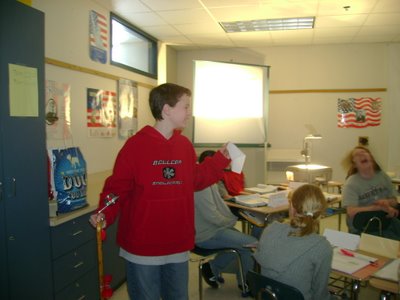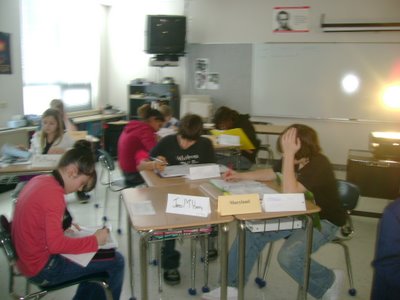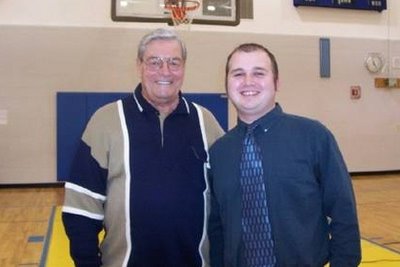On the second day of the Convention, classes finished up debating the issue of how representation in the national legislature (congress) would be determined. A 2/3 majority was needed in our convention for a motion to pass. Some classes were able to agree and voted to adopt a compromise, others were not able to gather enough votes to pass any resolution.
We also began debating Issue 2 which dealt with slaves. Soouthern states wanted slaves to count as part of their poplulation so that they could have more representatives in Congress. Northern states did not agree with the South, and instead felt that the southern states should have to pay taxes on their slaves.
We will conclude the debate on this issue on Day 3. Hopefully some of the classes will be able to reach a resolution on this issue.
Delegate Alexander Hamilton of New York:

Delegate George Read of Delaware address the convention about the role of slaves in determining a states representation in Congress:

Delegates request permission to speak from the President of the Convention, General George Washington:
Delegate Charles Ellsworth of Connecticut addresses the Convention:

Benjamin Franklin of Pennsylvania uses a metaphor to make his point:
Delegates read about the issues before they debate:
.JPG)
.JPG)
.JPG)
.JPG)
.JPG)
.JPG)
.JPG)
.JPG)
.JPG)
.JPG)
.JPG)
.JPG)
.JPG)
.JPG)
.JPG)
.JPG)
.JPG)
.JPG)
.JPG)
.JPG)
.JPG)
.JPG)
.JPG)
.JPG)
.JPG)
.JPG)
.JPG)
.JPG)
.JPG)
.JPG)
.JPG)
.JPG)
.JPG)
.JPG)
.JPG)
.JPG)
.JPG)
.JPG)
.JPG)
.JPG)






















